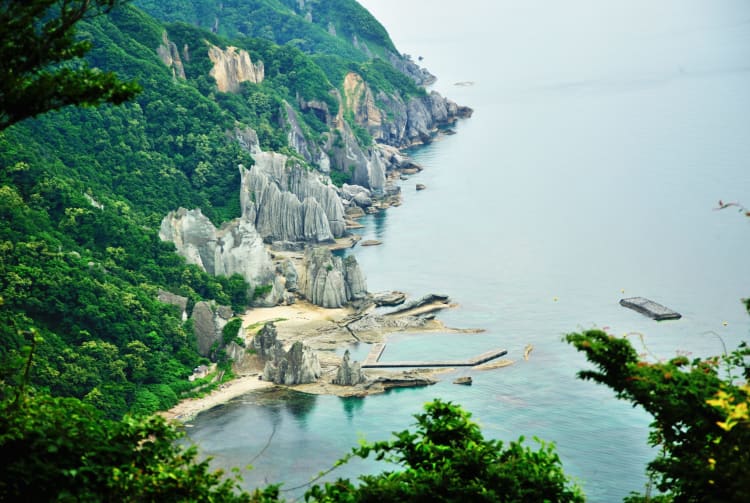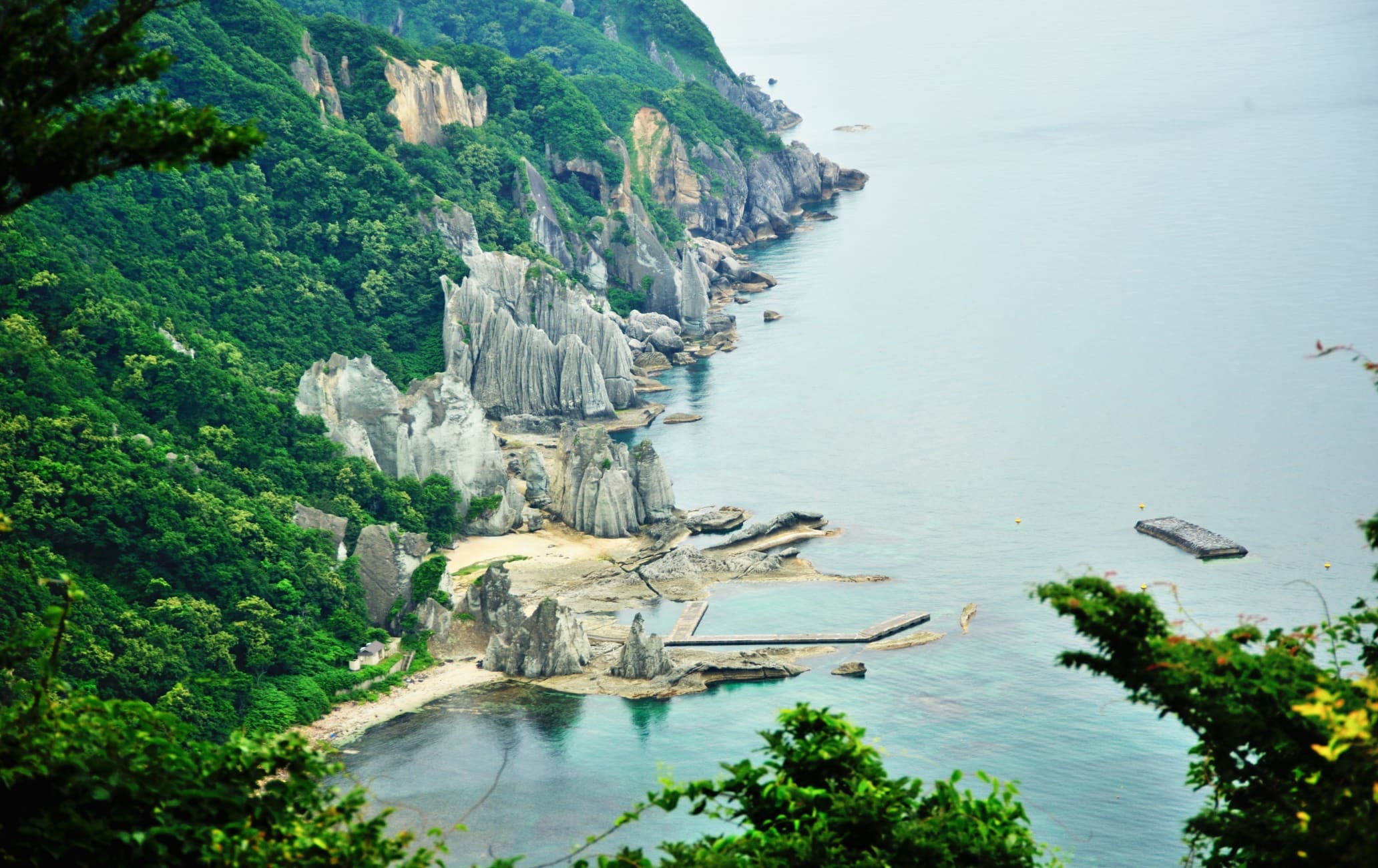Der nördlichste Punkt von Aomori, seit langem als ein Ort der Anbetung bekannt
Der nördlichste Punkt der japanischen Hauptinsel ist eine Schatzkammer mit Sehenswürdigkeiten und kulturellen Wahrzeichen.
Nicht verpassen
- Osorezan ist (zusammen mit Hieizan und Koyasan) einer der drei heiligsten Orte Japans
- Die Hotokegaura-Felsformationen, riesige Felsformationen am Eingang der Mutsu-Bucht
- Begegnungen mit wilden japanischen Affen in Wakinosawa
Anfahrt
Die Bushaltestelle Busbahnhof Mutsu ist der zentrale Punkt auf der Halbinsel Shimokita.
Der Bahnhof Hachinohe ist eine von vier Shinkansen-Haltestellen in der Präfektur Aomori (die anderen sind Shichinohe-Towada, Shin-Aomori und Okutsugaru-Imabetsu). Dies ist die nächste Station von Tokyo ; er bildet eine Durchgangsstation für Nahverkehrszüge entlang der Ostküste von Tohoku und zur nördlichen Halbinsel Shimokita.
Um zur Haltestelle Mutsu Busbahnhof zu gelangen, fahren Sie ca. 45 Minuten von Hachinohe zum Bahnhof Noheji mit der Aomori Railway Line, anschließend 90 Minuten mit dem Shimokita Kotsu Noheji Linienbus.
Die bequemste Art der Reise ist das Auto. Autovermietungen gibt es an den Bahnhöfen Shimokita, Noheji, Aomori und Hachinohe sowie am Flughafen Misawa.

Heilige Klippen
Die steilen Klippen und merkwürdigen Felsformationen bei Hotokegaura sind spektakulär. Der Name kommt von dem japanischen Wort für Buddha, "Hotoke". Viele der Felsen wurden von der Natur so geformt, dass sie dem Buddha in verschiedenen Positionen ähneln.
Dieser Teil von Aomori ist sehr ursprünglich und wild.






Kap Oma
Das isolierte Kap ist der nördlichste Punkt der Insel Honshu, der Hauptinsel Japans.














































